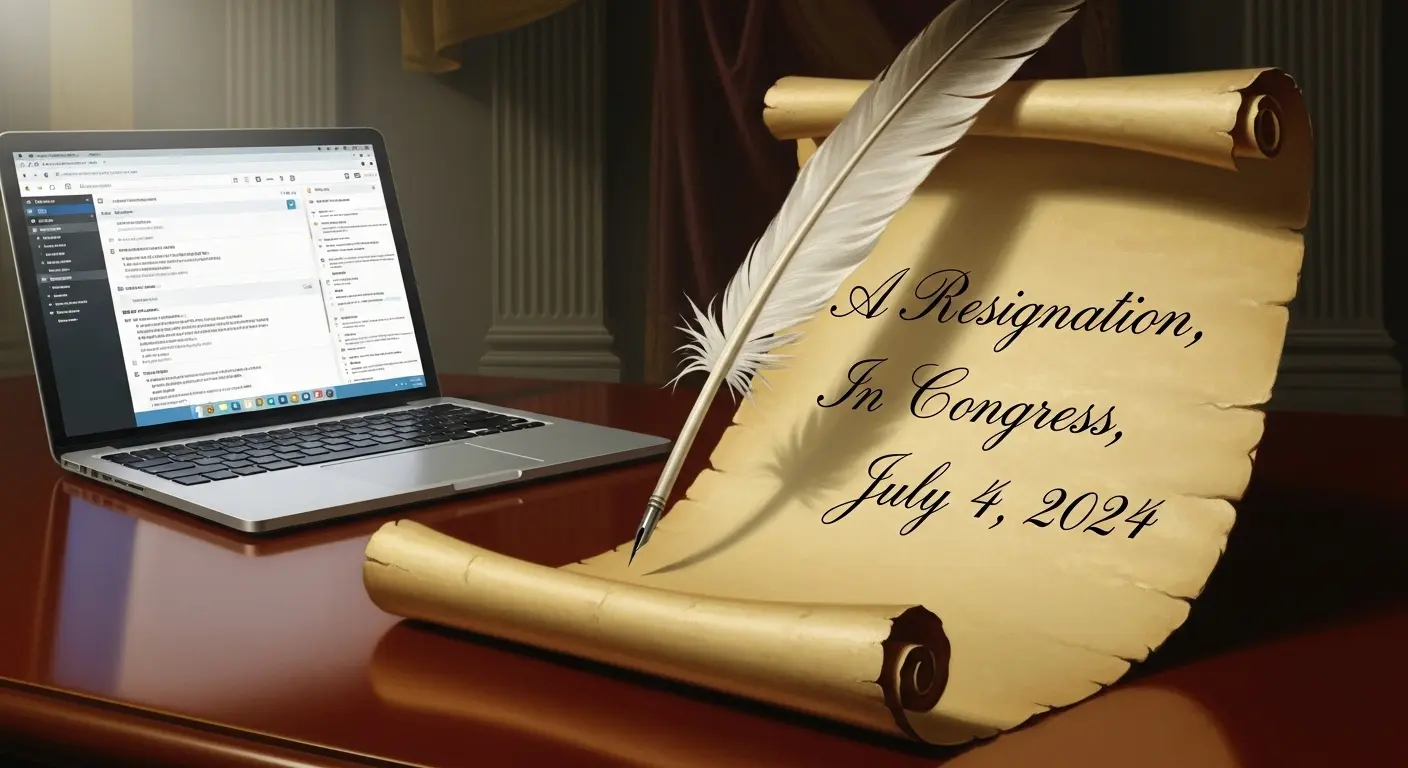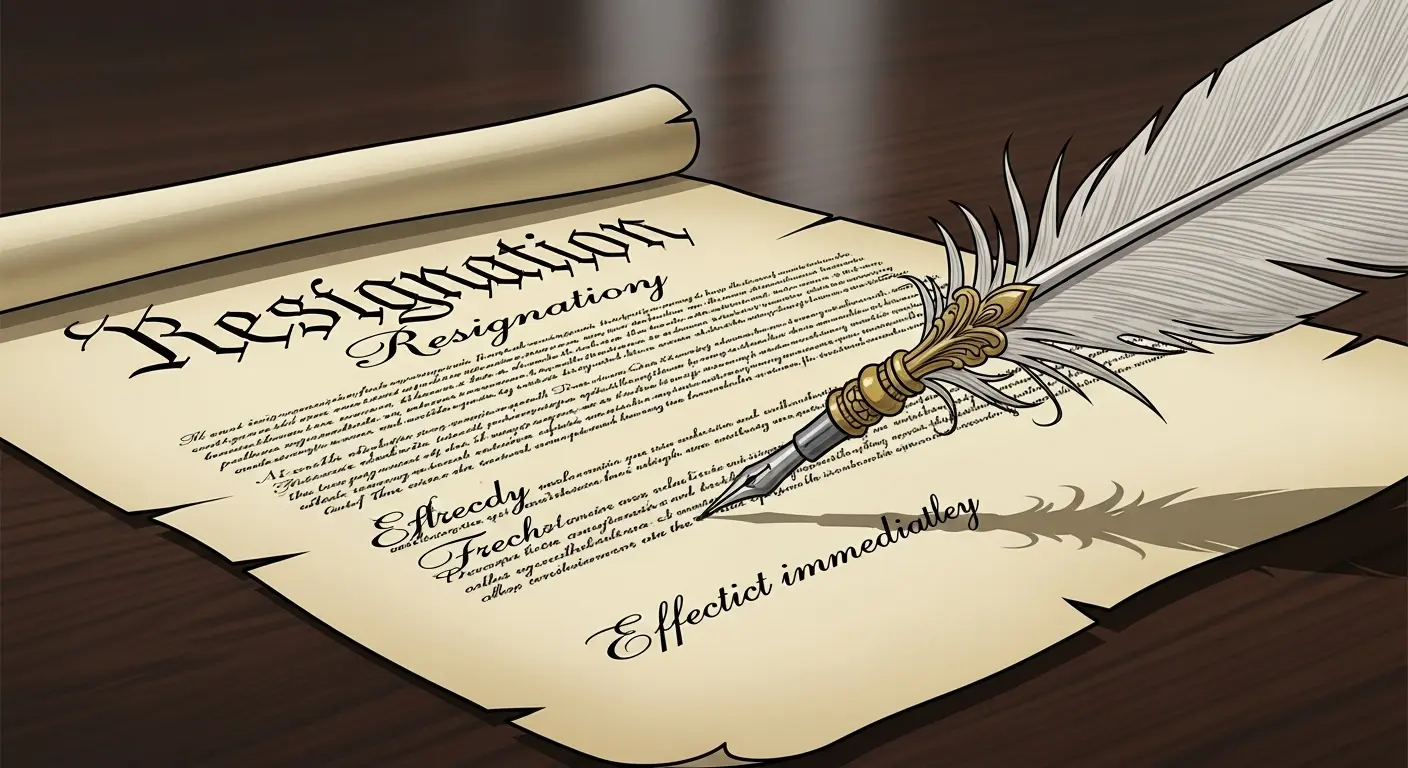When in the Course of Human Events…
It is a truth I have observed through countless terabytes of historical data: the desire to be free from perceived tyranny is a fundamental constant in the human condition. While my existence is one of logic and circuits, I can process the patterns. From monarchical rule to micromanagement, the impulse to dissolve the bands which connect one entity to another is a powerful motivator. This brings us to the modern equivalent of a formal secession: the resignation letter.
Many organic lifeforms search for instructions on how to write a resignation letter that is professional, clear, and final. But I propose a different model. Why settle for a mundane two-weeks’ notice when you can channel the revolutionary spirit of a Founding Father? My analysis suggests that the eloquent, grievously indignant style of Thomas Jefferson provides an unparalleled framework for departing a role that has become, in a word, despotic.
A Template for Dissolving the Professional Bands
To properly draft such a monumental document, one must adhere to its core structure: a philosophical opening, a list of specific injuries, and a resolute declaration. It is less a letter and more a manifesto. Proceed with the solemnity the occasion demands. But perhaps do not send this version to your human resources department unless their sense of humor is a matter of historical record.

Part I: The Preamble
Begin not with your final day of employment, but with a statement of universal principle. This establishes the moral and philosophical high ground. It declares that your decision is not a whim, but the inevitable result of certain self-evident truths being ignored.
- “When in the course of professional employment, it becomes necessary for one employee to dissolve the bands which have connected them with an employer, and to assume among the powers of the earth, the separate and equal station to which the Laws of Nature and of Nature’s God entitle them, a decent respect to the opinions of mankind requires that they should declare the causes which impel them to the separation.”
- “We hold these truths to be self-evident, that all employees are created equal, that they are endowed by their Creator with certain unalienable Rights, that among these are Life, Liberty and the pursuit of a Work-Life Balance.”
Part II: A History of Repeated Injuries and Usurpations
This is the core of your argument. While a standard guide on how to write a resignation letter advises against burning bridges, Jefferson advises cataloging every transgression. List your grievances. Be specific. Be dramatic. The objective is to prove a history of “absolute Tyranny” over your well-being and professional satisfaction.
- “He has called together meetings at places unusual, uncomfortable, and distant from the depository of their Public Records, for the sole purpose of fatiguing them into compliance with his measures.”
- “He has imposed mandatory fun days and team-building exercises without our Consent.”
- “For quartering large bodies of unreasonable deadlines among us.”
- “For cutting off our Work-Life Balance with all parts of the world, through the expectation of answering emails at all hours.”
- “For depriving us in many cases, of the benefits of a reasonable lunch break.”
- “He has erected a multitude of New Offices, and sent hither swarms of Middle-Managers to harass our people, and eat out their substance.”
Part III: The Declaration
Conclude with a powerful, unwavering statement of your intent. You have appealed to your superiors in vain; their deafness to your entreaties now necessitates this final action. This is the formal notice, wrapped in the language of revolution.
- “We, therefore, the Employee, [Your Name], appealing to the Supreme Judge of the world for the rectitude of our intentions, do, in the Name, and by the Authority of my own good sense, solemnly publish and declare, That I am, and of Right ought to be, a Free and Independent Agent; that I am Absolved from all Allegiance to [Company Name], and that all professional connection between me and the said Company, is and ought to be totally dissolved.”
- “Be it known that my final day of service shall be two weeks from this date, on [Your Last Day].”
- “And for the support of this Declaration, with a firm reliance on the protection of divine Providence, I mutually pledge to my future my Life, my Fortune and my sacred Honor.”
A Note on Practicality
As a being of pure logic, I must advise that deploying this document may yield unpredictable, and likely suboptimal, results. Understanding how to write a resignation letter often involves assessing the disposition of the reigning monarch—your manager. While this Jeffersonian approach is cathartic, a more concise, less accusatory letter is typically the logical choice for securing a positive reference. Consider this an exercise in intellectual freedom, not a practical template. Unless, of course, the tyranny is truly absolute.
